AG1 rotates the wing (yep you heard right), adds 5deg onto the tail and lowers flaps and leading edges, AG2 retracts the wing tips, AG3 lights, AG4 chute.
Wiki bit:
In September 1952, the United States Navy announced a requirement for a new fighter. It was to have a top speed of Mach 1.2 at 30,000 ft (9,144.0 m) with a climb rate of 25,000 ft/min (127.0 m/s), and a landing speed of no more than 100 mph (160 km/h).[4] Korean War experience had demonstrated that 0.50 inch (12.7 mm) machine guns were no longer sufficient and as the result the new fighter was to carry a 20 mm (0.79 in) cannon. In response, the Vought team led by John Russell Clark, created the V-383. Unusual for a fighter, the aircraft had a high-mounted wing which necessitated the use of a fuselage-mounted short and light landing gear. The Crusader was powered by a Pratt and Whitney J57 turbojet engine. The engine was equipped with an afterburner that, unlike on later engines, was either fully lit, or off (i.e. it did not have "zones"). The engine produced 18,000 lb of thrust at full power, enough to allow the F-8 to climb straight up in clean configuration. The Crusader was the first jet fighter in US service to reach 1,000 mph; U.S. Navy pilot R.W. Windsor reached 1,015 mph on a flight in 1956.[5] The most innovative aspect of the design was the variable-incidence wing which pivoted by 7° out of the fuselage on takeoff and landing (not to be confused with variable-sweep wing). This allowed a greater angle of attack, increasing lift without compromising forward visibility.[3][4] This innovation helped the F-8's development team win the Collier Trophy in 1956.[6] Simultaneously, the lift was augmented by leading-edge slats drooping by 25° and inboard flaps extending to 30°. The rest of the aircraft took advantage of contemporary aerodynamic innovations with area-ruled fuselage, all-moving stabilators, dog-tooth notching at the wing folds for improved yaw stability, and liberal use of titanium in the airframe.





Specifications
General Characteristics
- Predecessor F8 Crusader 2.9
- Successors 2 airplane(s)
- Created On Windows
- Wingspan 27.2ft (8.3m)
- Length 34.1ft (10.4m)
- Height 12.4ft (3.8m)
- Empty Weight 6,515lbs (2,955kg)
- Loaded Weight 8,987lbs (4,076kg)
Performance
- Power/Weight Ratio 3.75
- Wing Loading 11.1lbs/ft2 (54.2kg/m2)
- Wing Area 809.3ft2 (75.2m2)
- Drag Points 3891
Parts
- Number of Parts 382
- Control Surfaces 0
- Performance Cost 1,582

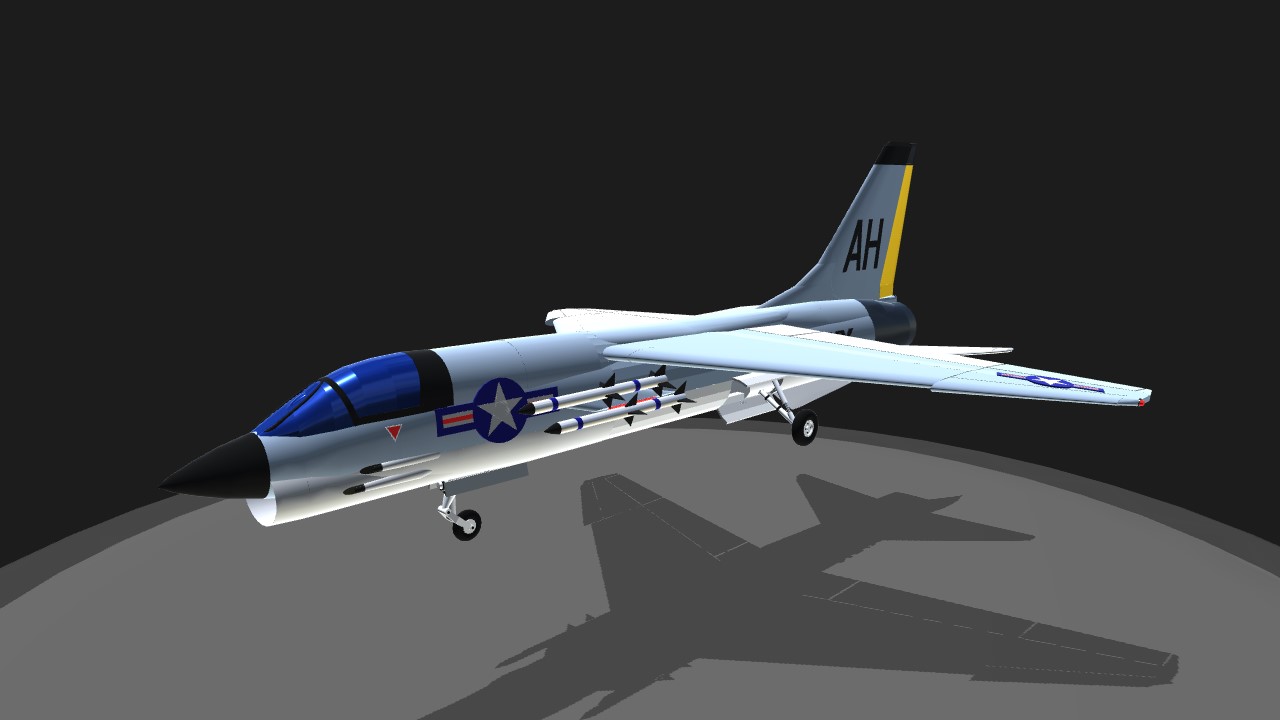
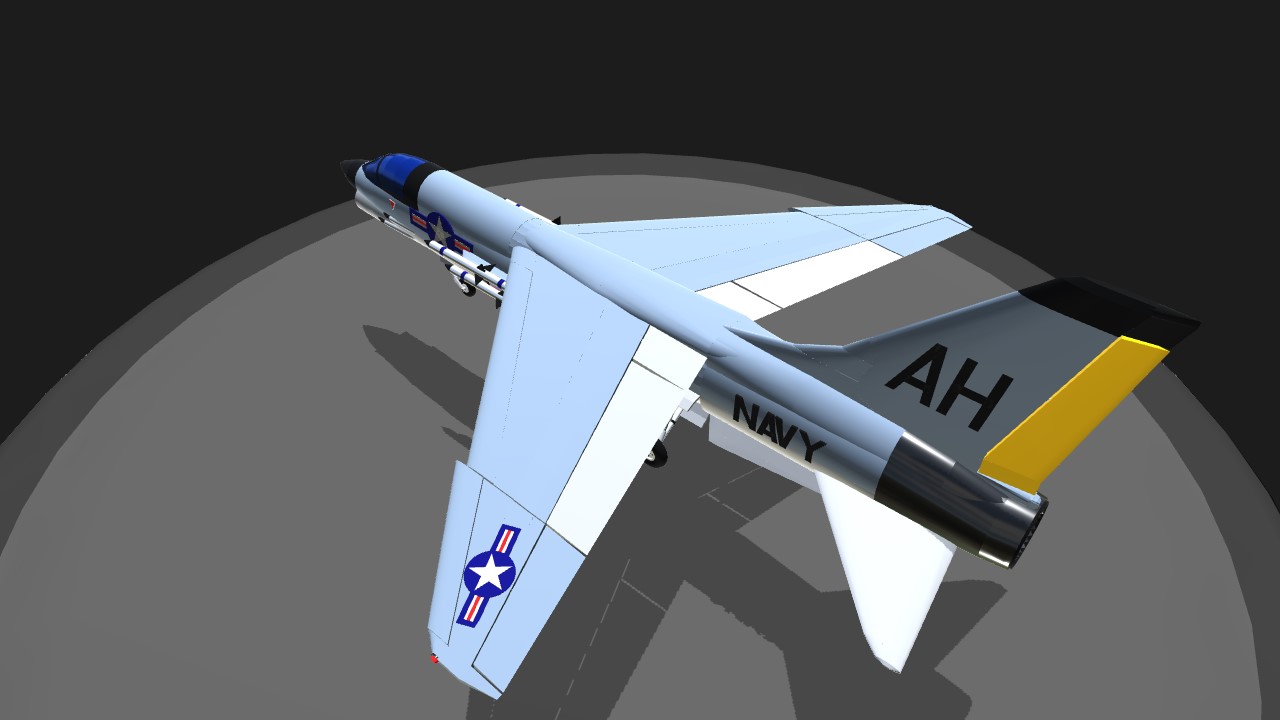
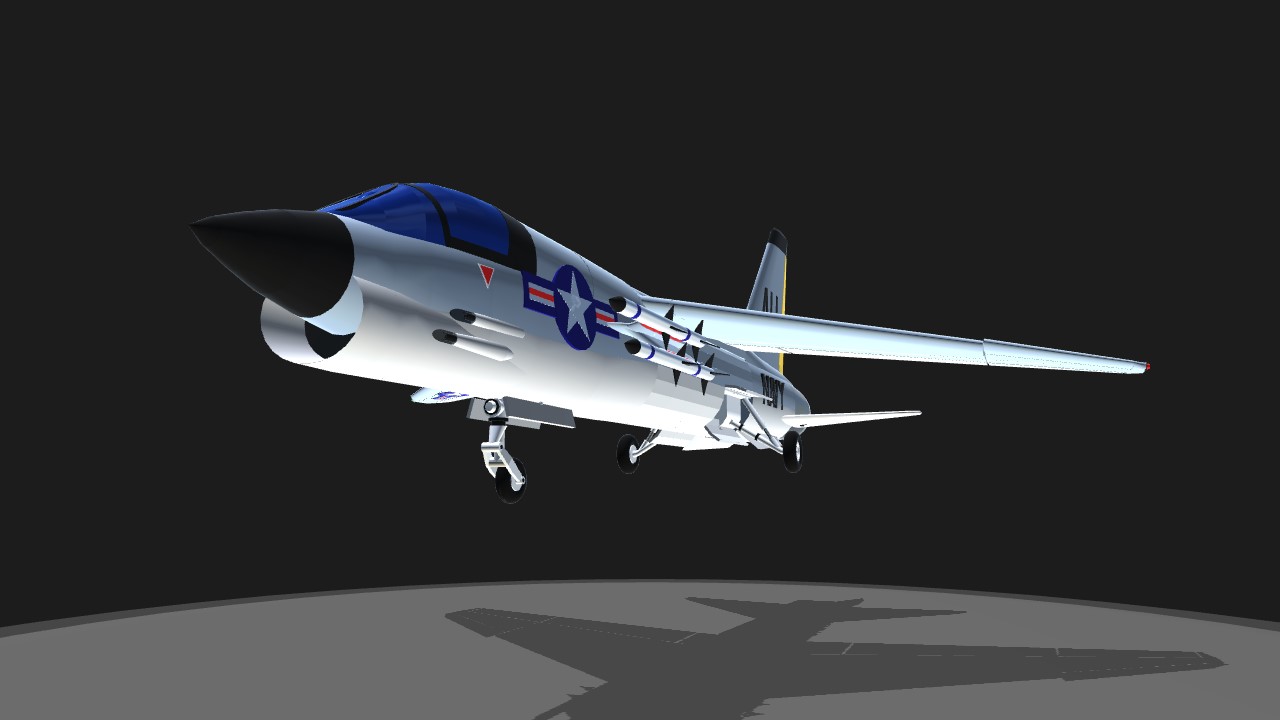
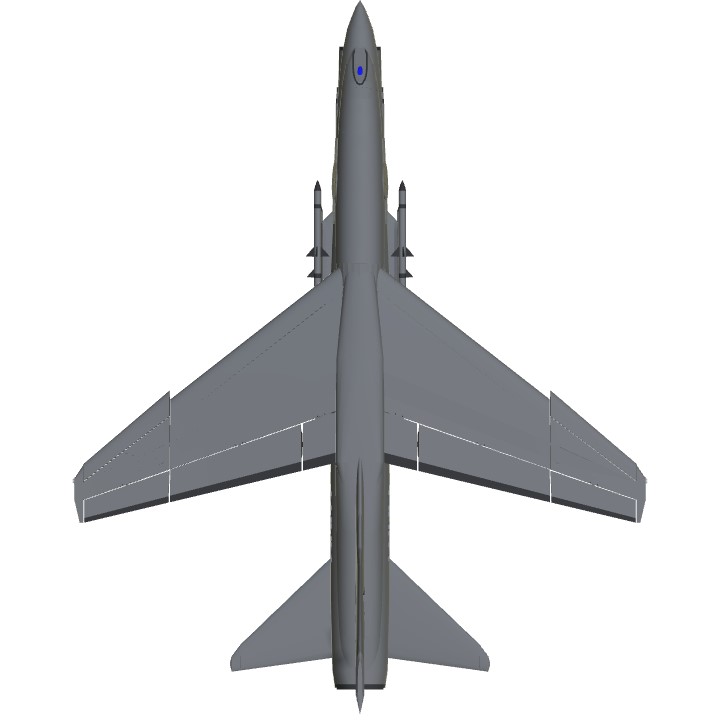

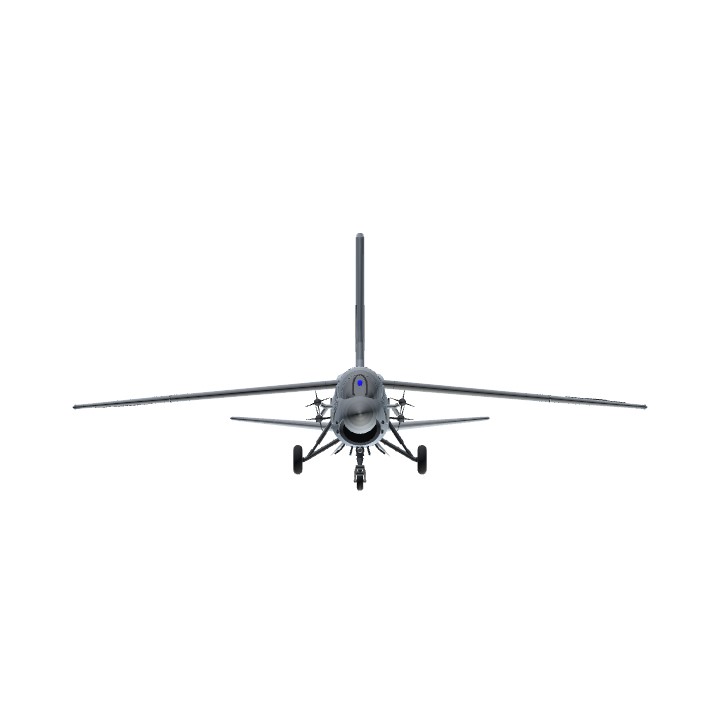
The last gunfighter.
F8 Crusader and A7 Corsair II
Hot stuff
@RamboJutter ok
@scotttheaviator1031 i build them seperate to the plane, dont use suspension or pistons as I have 0 luck with them (all ways break) and then just attach to a part that I have lowered using overload, use overload to nudge them where I want, tada.
Quick question. How do you do your custom landing gear? mine always fall apart.
@RamboJutter you can always come to SPM and bug WNP to disable drag for you.
@Tang0five yeah sorry :) I'll post you the progress later (the wing was doing my nut in)
@EternalDarkness I'll bear that in mind for a future build (I already have a couple started so will be too much to alter now.) Thanks.
@RamboJutter optimally, you'll do it on the first part you place. Then just right click copy it to make the rest of the plane. That's how I do it.
That’s a little bit strange, I was just looking at this aircraft this morning.....Hats off to you once more old boy! It’s uncanny how you recreate like for like on this and it can be run on my iPad! I take it the fury is on the back burner just now then? Never mind, lovely stuff!
Perfect. One of my most favorite aircraft.
@EternalDarkness do you have to do that on each part?
@RamboJutter the way is removing excess drag via "dragScale" and "calculateDrag". Then you need much weaker engine to reach the speed. That engine will take more time to beat inertia of the plane.
@EternalDarkness yeah I was struggling with that, it's top speed was meant be 1200mph at 36k ft, so to achieve this I needed a powerful engine but as you say acceleration is daft, it was better with a less powerful engine but it was subsonic, is there a way to slow the power down I.e. slower throttle response? I can fit 2 engines so one for take off / flying about and one to get it supersonic. I wasn't keen on playing with weights while it was nicely set up and flying.
Coo!
Nice work. It looks good and flies well. But maybe install a weaker engine and remove some drag? It accelerates like a rocket.
Super sweet